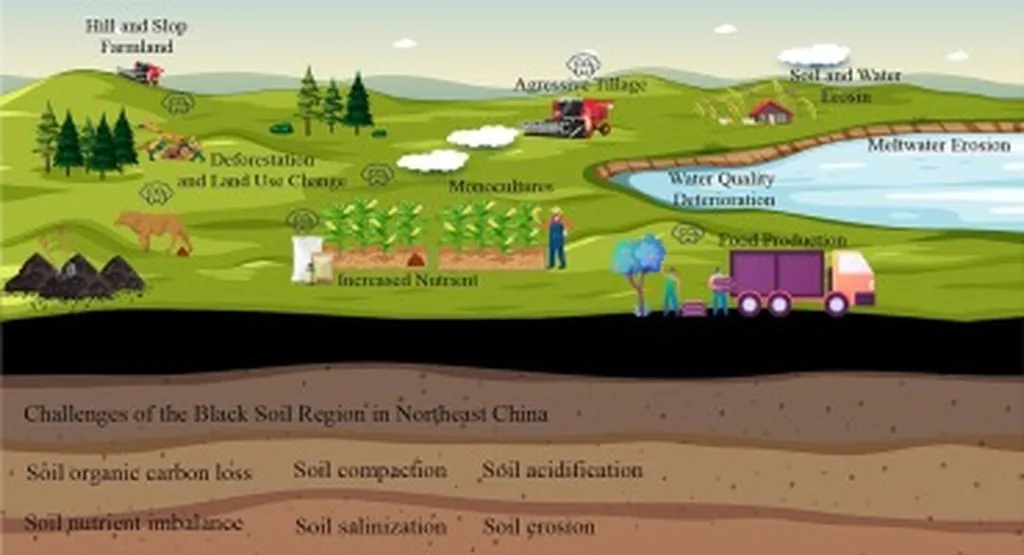In the heart of Northeast China lies a vast expanse of black soil, a critical grain production base that feeds millions. Yet, as climate change and population growth intensify, this region faces mounting ecological challenges. A recent study published in *Agricultural Water Management* offers a promising pathway to sustainable agriculture by optimizing cropping structures based on carbon and water footprints. Led by Huiye Wang of the College of Resources and Environmental Sciences at China Agricultural University, the research introduces a novel approach to balancing economic, social, and ecological benefits in the face of climate uncertainty.
The study focuses on the black soil region, where sustainable agricultural management is essential to mitigate food security risks. The researchers employed a combination of the NSGA-III genetic optimization algorithm and the entropy weight-TOPSIS method to screen the optimized solution set and determine the optimal cropping structure scheme at the municipal scale. This innovative approach addresses the non-linearity and high dimensionality of existing multi-objective optimization models, providing a robust framework for decision-making.
The results revealed that rice had the highest carbon footprint, followed by soybean and maize. Major contributors to carbon emissions in the study region were methane from paddy fields, straw burning, and nitrogen fertilizer input, with respective contribution rates of 24.72%, 23.30%, and 17.41%. Soybean had the highest water footprint, with green water dominating the major component. “Understanding these footprints is crucial for developing strategies that minimize environmental impact while maximizing agricultural productivity,” Wang explained.
After optimization, the study found that the area under cultivation in the central part of the study area would increase by at least 12.96×104 ha, while the area in the northern part would decrease by 119.33×104 ha. The planting areas of maize and rice would decrease by about 11.87×104 ha and 6.37×104 ha, respectively, while the planting area of soybean would increase by about 8.84×103 ha. These findings provide a decision-making basis for optimizing the cropping structure in the black soil region, facilitating the promotion of sustainable agricultural production and the development of climate-smart agriculture.
The commercial implications of this research are significant. By optimizing cropping structures, farmers and agricultural businesses can reduce their carbon and water footprints, leading to cost savings and improved environmental stewardship. “This approach not only benefits the environment but also enhances the economic viability of agricultural operations,” Wang noted. The study’s methodology can be applied to other regions, offering a scalable solution for sustainable agriculture worldwide.
As the agriculture sector grapples with the impacts of climate change, this research provides a valuable tool for achieving climate-resilient agriculture. By integrating multi-objective optimization and eco-efficiency evaluation, the study paves the way for future developments in the field, shaping the future of sustainable agriculture and ensuring food security for generations to come.

